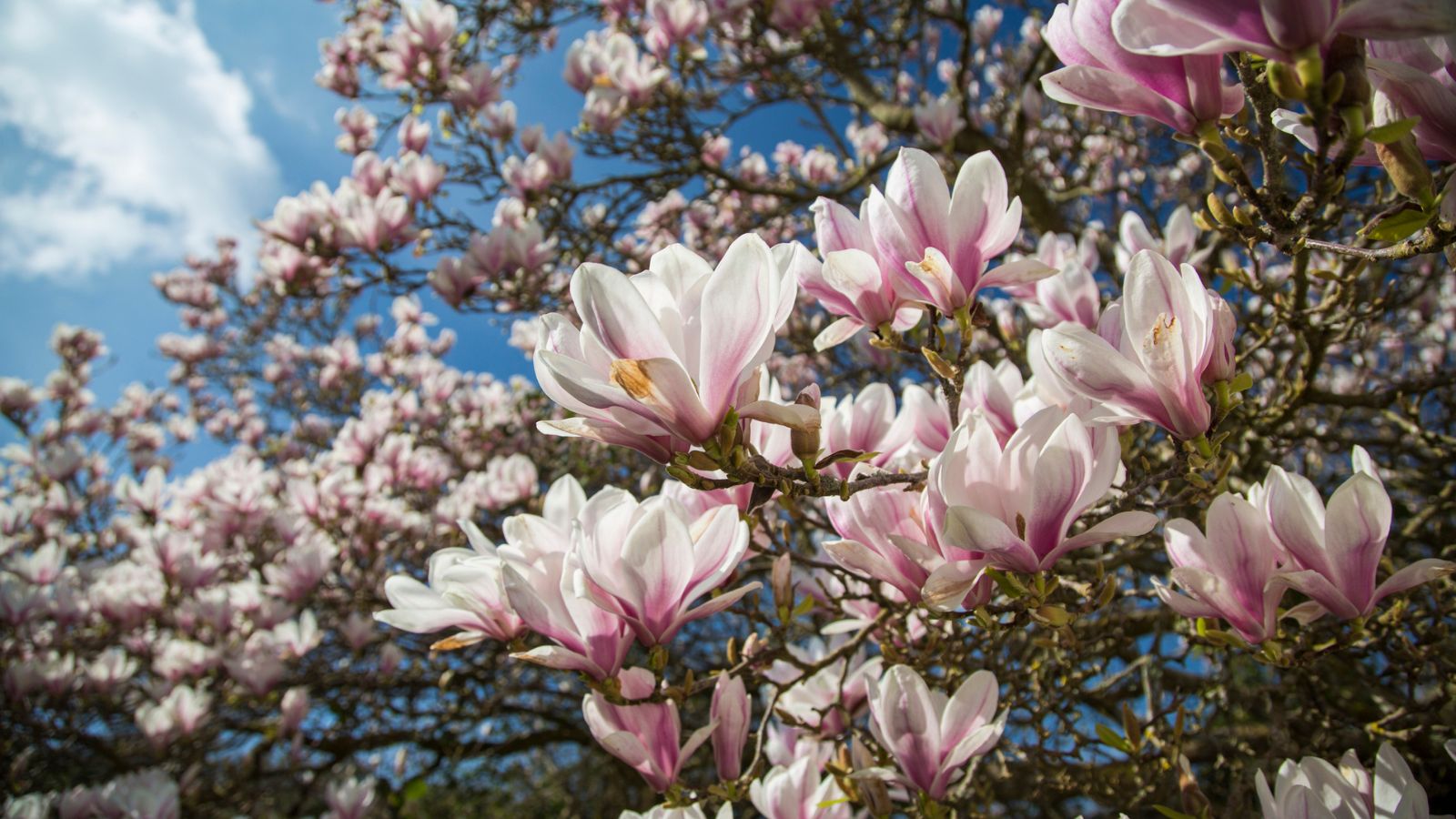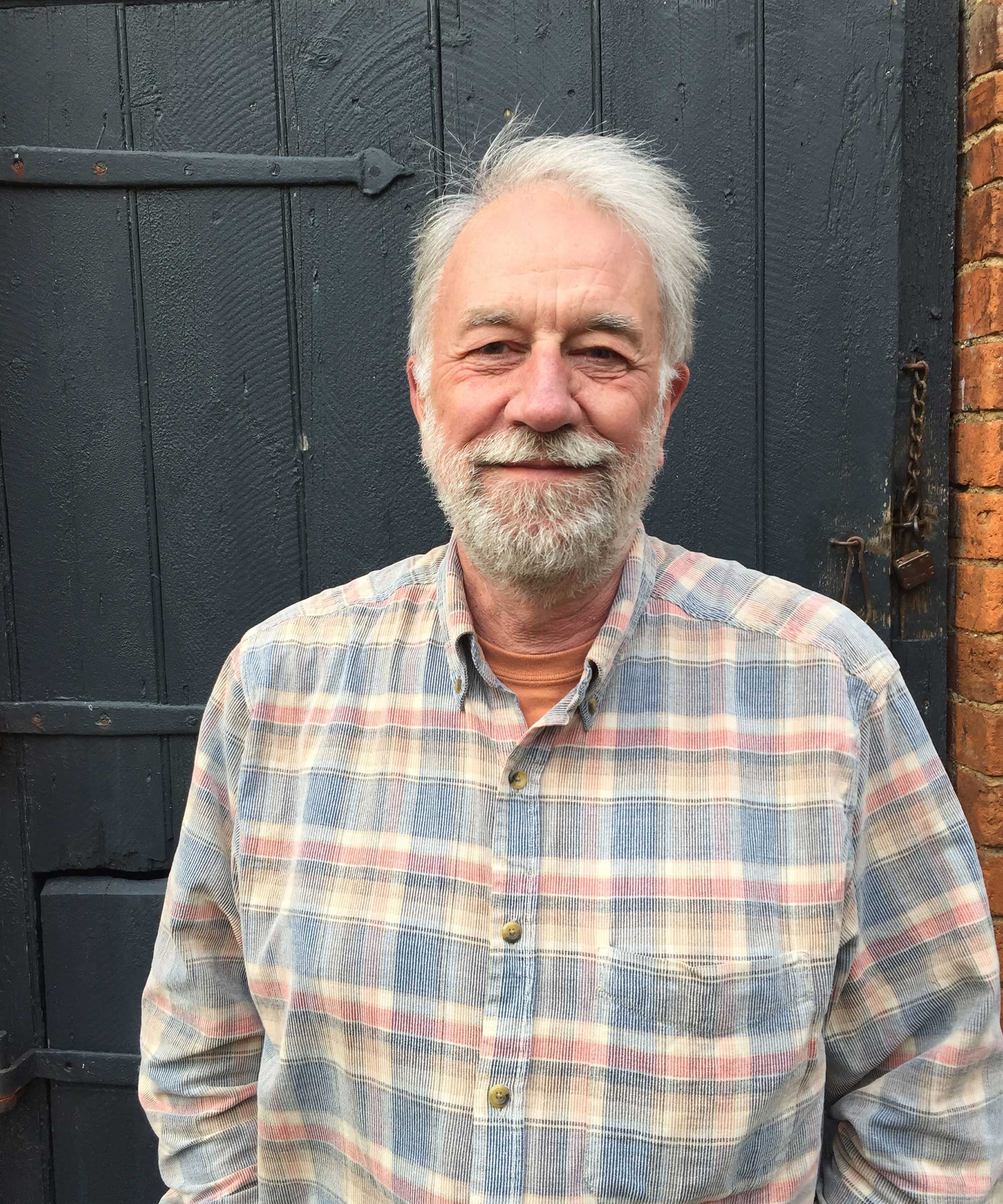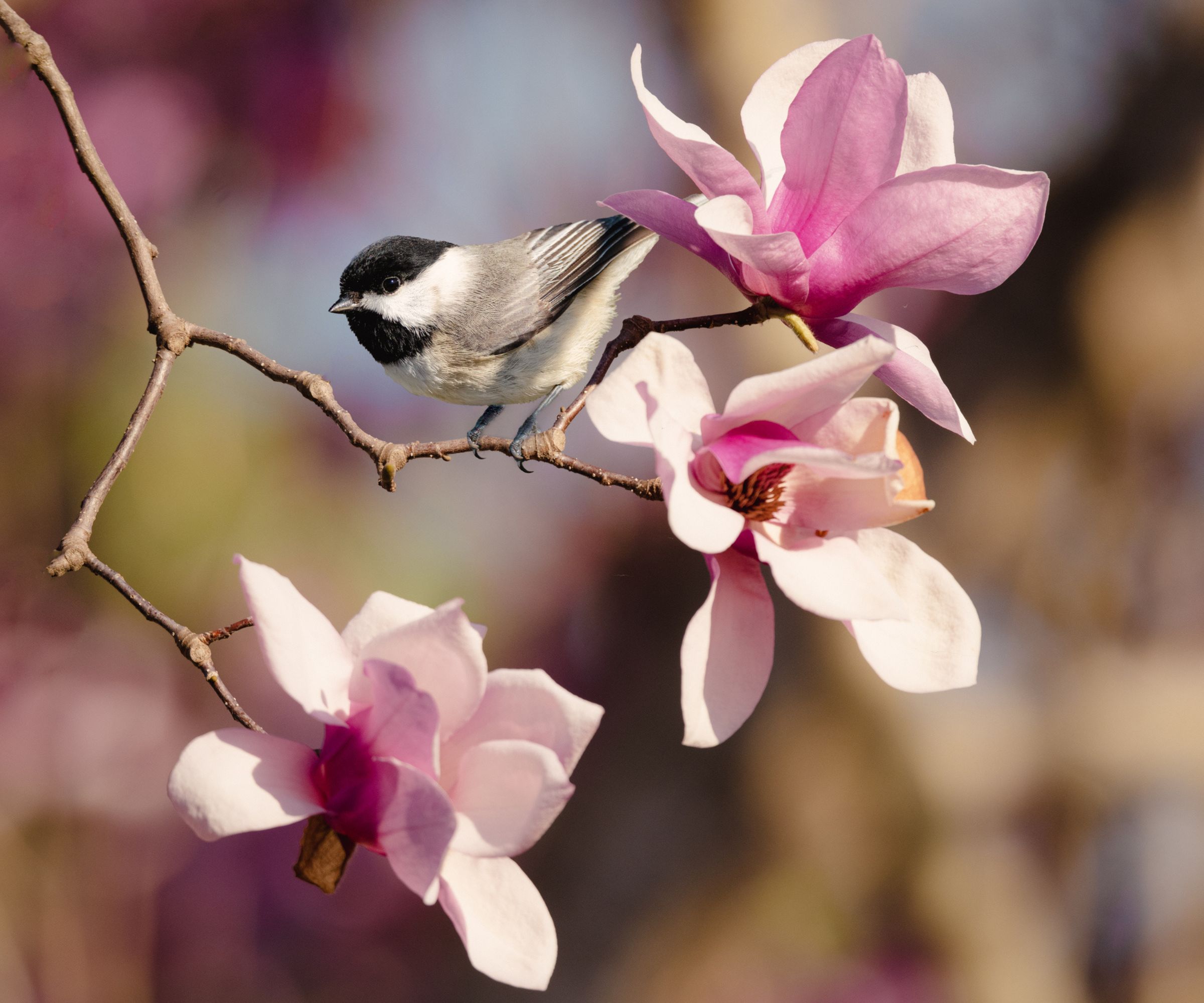How to grow and care for a magnolia tree – an expert guide
Magnolias are some of our most flamboyant trees but, evergreen or deciduous, native or exotic they all require their own individual care


Magnolias are about the most exotic looking hardy trees and shrubs we can grow. They are mainly deciduous, but sometimes evergreen, shrubs and trees that thrive most successfully in lime-free soils. The large leaves are mostly oval or elliptical in shape, and develop after the petals fall. A few also feature buttery fall foliage color. Some are hardy down to zone 4 and will take anything the winter throws at them, others are less resilient and more suited to tropical climates.
The flowers of deciduous magnolias range from deep purple or deep red through a variety of pink shades to pure white plus some sunny yellow varieties. In many, the outsides of the petals are noticeably darker than the insides. Many are also scented.
There are also evergreen magnolias, from bushy shrubs to spreading trees, with large glossy leaves, but these are less hardy so are unsuitable for colder gardens. With sumptuous fleshy flowers in pure or creamy white, many have a lemony fragrance. After the flower come the fruits, which look like small lumpy cucumbers from which the red seeds burst.
Amongst the best trees for front yards, they can create a beautiful focal point.
Growing and caring for a magnolia tree: the basics

Magnolias fall into two main groups: evergreen magnolias, for which the foliage is very definitely part of their appeal, and the generally hardier deciduous magnolias. When mature, their size ranges from 15 to 60ft. These are the basics:
Soil type: Rich and well-drained.
Soil pH: Acid soil for most, plus rich alkaline soils.
Light: Best in bright, but not necessarily sunny situations.
Planting time: Spring.
Flowering time: Spring, summer.
Flower color: White, pink, purple, yellow.
Hardiness zones: USDA Zones 2-7.
Common name: Lily tree, magnolia, sweetbay.
Growing evergreen magnolias
The evergreen native southern magnolia, Magnolia grandiflora (USDA Zone 7), with its leathery, shiny, dark green elliptical foliage is a familiar landscape tree across the south.
The only drawbacks are its large size: it can reach 80ft in height, and the dense, dry shade it creates. Its huge, 10 to 12in, lemon-scented, white flowers open in midsummer. Shorter varieties are now available.
The 20 to 60ft, hardier, sweetbay magnolia, Magnolia virginiana (Zones 3-6), with large dark leaves colored silver below, opens its much smaller blooms sporadically through spring and summer.
The smaller, 30ft, Chinese, Magnolia delavayi (Zone 7) opens its creamy fragrant flowers in midsummer, but often at night. Plants in the much smaller Fairy Series (Zone 7) are shrubs reaching about 10ft with spring flowers in pure white, creamy white or blushed white lining the branches. It makes a good hedge.
Growing deciduous magnolias
Deciduous magnolias tend to be much hardier, and many feature a dramatic spring burst of bloom in white, pink, purple and even yellow. Many also make mature into fine shrubs for large and small yards.
Star magnolia Magnolia stellata (Zone 4) makes a large bushy shrub or small tree reaching 20ft in height but can be limited to 6 to 8ft by pruning or even less when grown in a container. The 4in flowers come in white and various pink shades.
Magnolia x soulangeana (Zone 4) is recognized as the most prolific of large shrubs and small trees, with goblet-shaped flowers standing up from the branches in white and various pink and purple shades.
Making a large, spreading shrub, the crimson centered, white, fragrant flowers of Magnolia sieboldii (Zone 5) tend to look down from above in late spring.
Magnolia salicifolia (Zone 4) develops narrow, upright growth and its white flowers are among the earliest to open.
Growing native magnolias
Eight wild magnolias are native to North America and they are some of the most dramatic of trees and large shrubs, as well as being important elements in American ecosystems.
The cucumber tree, Magnolia acuminata, grows in the east from Ontario to Florida and gets its name from its 3in, cucumber-like fruits. It is the only wild magnolia with yellow flowers and often features spectacular golden fall leaf color.
Magnolia fraseri, Fraser’s magnolia, grows wild in the southern Appalachians from Virginia and Kentucky to Georgia and Alabama. Its huge dramatic foliage, up to 2ft long and 25cm across, makes a bold feature and turns yellow in fall. The southern magnolia, Magnolia grandiflora, grows wild in the south, from North Carolina to Florida and west to Texas but is widely planted all over the south flor its bold foliage and dramatic white flowers.
Magnolia macrophylla, bigleaf magnolia, is native from Ohio and Kentucky south to Georgia and west to Louisiana and Arkansas. It boasts magnificent foliage up to 3ft long and 1ft wide, sometimes more, that is silver on the underside. The creamy flowers are also large, up to 18in across, and open from spring to midsummer.
The sweetbay magnolia, Magnolia virginiana, grows in a coastal arc from New York to Texas, its small creamy flowers opening in late spring.
How to choose a magnolia tree

Magnolias come in an ever increasing range. Some are evergreen, some are deciduous. Some have huge flowers, while in a few varieties the flowers are hardly noticeable. Flower color varies from purple and pink shades to creamy and pure white with yellow-flowered varieties becoming more widely available. Fragrance is a feature of many.
A few magnolias can be grown in containers, some are suitable for small yards, many need more space and some develop into tall specimen trees as much as 90ft tall. Some magnolias develop narrowly upright growth, some mature into widely spreading specimens.
Hardiness is also an import factor to consider. Some deciduous magnolias are happy in areas as cold as USDA Zone 2. Other, mainly evergreens, will only tolerate USDA Zone 7.
The flowers of many deciduous varieties can be damaged by frost. In some cases, flowers that are open may be frosted while unopened buds will be untouched and open a few days later.
Where to plant a magnolia tree
Most magnolias are happiest in slightly acid soils, so if azaleas and rhododendrons do well in your garden then magnolias will too. Many will also take a neutral or slightly limy soil (pH5.5-6.5 suits most magnolias), although star magnolias Magnolia stellata and saucer magnolias Magnolia x soulangeana, are more tolerant of alkaline soil than other types. If in doubt, test your soil with a soil test kit from Amazon.
Magnolias appreciate good drainage but, at the same time, are unhappy in long dry summer conditions. Irrigation may be necessary. Sweetbay magnolias, Magnolia virginiana, have different needs and will grow well in soils that are wet all year round.
Most magnolias enjoy plenty of sunshine, but will usually flower well if shaded from the side or if shaded for part of the day. Avoid sites exposed to cold winds, or sites facing east.
How to plant magnolias
Dig a hole the depth of your spade and at least twice as wide as the pot – three or four times as wide is better, as the spreading roots tend to stay fairly close to the soil surface. Amend the soil with composted bark, garden compost or another organic soil conditioner.
Remove the plant from its pot and tease the roots loose from the edges of the potting soil. Plant so that the top of the potting soil from the pot is level with the surrounding planting site. Water in well, and water every week for a year except through winter.
Balled and burlapped plants tend to be much larger specimens that need a different approach. If your supplier cannot deliver and plant it for you, then dig a hole larger than the rootball, for larger specimens allow a foot all round. Fork over the base of the planting hole, add lime-free soil improver, and work it into the soil. Remove enough soil to allow the rootball to sit in the hole so that the top of the rootball is level with the surrounding area. Cut away the top half of the burlap and remove it. Use the surplus soil to fill the hole around the tree. Firm it with the ball of your foot, water thoroughly, then mulch with bark or other weed free organic matter.
Be sure to pull the mulch away from the stem of the magnolia. In windy areas, it may be necessary to support larger magnolias with a tree stake.
When to plant a magnolia tree
In mild climates, plant deciduous varieties fall, or in winter when the ground is neither frozen or sodden. In cold climates, plant in early spring. Plant evergreens in early spring.
How to care for a magnolia tree
Magnolias do not demand a great deal of care and attention.
Irrigation is important in dry summer seasons, and the mulch can be renewed every year (or every two years if it is still working well).
In their first year, ensure that newly planted magnolias do not dry out.
Fertilizing is not generally needed, but an application of rhododendron food in spring will give your magnolia a boost. It can also pay to feed new plants with a liquid rhododendron feed, such as Miracid, at Amazon twice a year until they are established and growing well.
Pests, such as slugs can also be surprisingly damaging as newly-planted magnolias send out new growth, so take precautions, with an organic slug treatment, such as Natria Neem Oil Spray, at Amazon.
You may need to keep deer away from plants with a fence or a deterrent. As well as eating the shoots the stags often rub their antlers against the trunk and branches to remove the velvet and, in the process, damage the magnolia – parts of which may die. A wire cage around the tree is the only answer. Andwarmth tree protectors at Amazon are designed to deter deer.
They suffer from few pests or diseases although scale (like tiny brown limpets) can cause damage, especially on weak plants, and in the south sassafras weevil can chew the leaves.
Grey mold can cause problems, especially in wet seasons, on the buds and flowers of star magnolia and saucer magnolia. Good air circulation helps prevent the disease becoming established, so plant at a wide spacing and remove crowded branches as your magnolia matures.
Fallen leaves will need raking or blowing away. Evergreen varieties may lose their leaves steadily through the year and not all in fall.
Pruning: In general, pruning magnolias is minimal. When planting, it is wise to snip any damaged shoots back to a healthy branch, damaged roots can be trimmed in the same way before refilling the planting hole.
As magnolias grow, they may develop an uneven shape and this can be corrected by thoughtful pruning. Look at your magnolia and imagine an even shape superimposed on it. And branches extending beyond the even shape can be pruned out, cut just in front of the next branch nearer the center of the plant.
Propagating magnolia trees
The simplest way to make more magnolias is to take from cuttings in spring. Growth made earlier the same year makes the best cuttings, so cut pieces of stem 6in long from the latest growth. It should be between firm and pliable.
Snip off the tip, just above a leaf, and snip the base just below a leaf joint. Snip off the leaves on the lower half of the cutting.
Fill a pot 6in wide with fresh, moist seed starting mix, and push each cutting into the soil an inch or two apart so that the lowest leaf is just above the compost. Water well, then place the pot in a plastic bag and tie the top. Place in a warm, bright place, such as a sun room, but not in direct sun. When roots start to emerge from the base of the pot, move the cuttings into individual pots to grow on for planting in the fall.
Where to buy a magnolia tree
You can find magnolia trees at Burpee and Fast Growing Trees.
The best range of magnolia plants is available from online mail order nurseries. Those available range from plants in tubes, which are narrow but deep pots that are economical to ship, but plants are also available to ship in one and two gallon pots or larger. Keep in mind that the larger the plant the higher the price and, usually, the higher the cost of shipping.
Magnolias in larger containers are often available at walk-in nurseries and garden centers. Magnolias that balled and burlapped are also sometimes offered. These are magnolias dug up from the nursery with dirt on their roots and wrapped tightly in burlap so that the dirt does not fall off. It is important to remember that these are large, and usually very heavy trees. Because they have been looked after by the grower for so long, they are expensive. The best way to be sure that your magnolia gets a great start in life, and that you do not injure yourself while moving it – is to ask your local nursery to deliver and plant your new magnolia.
FAQs
What can I plant under my magnolia tree?
Magnolias, especially evergreen varieties, can create dry and shady conditions under their branches as they mature. The fact that the roots are shallow and can spread out farther than the tree’s branches adds to the problem. The situation under large, mature magnolias can be improved by the thoughtful removal of a few low branches to allow in more light. This is a skilled job, so hire a qualified arborist.
It can be tempting to bring in more soil and spread it over the area under the tree to create areas that can be planted. The problem is that a deep layer will tend to cut off the air supply to the roots and then the tree’s roots will usually spread upwards into the new soil and
Some recommend siting your garden shed under the magnolia or, if the view is appealing, a summerhouse in the shade may partly solve the problem. There are also a number of ground cover plants that thrive in dry shade including ivies, periwinkles and pachysandra. Plants like ivies that send out creeping shoots along the soil surface can be planted under the edge of the tree’s canopy, where the light is better, and the shoots guided into the shade.
Can I grow a magnolia in a pot on my deck?
Yes, growing a magnolia in a container can provide and impressive specimen display, but it’s important to follow a few simple rules. Most magnolias are too large for a container, so stick to varieties that are naturally small. Growing them in a container will also tend to keep them compact. Good varieties include star magnolias, varieties of Magnolia stellata. The three varieties in the Fairy Series of neat evergreens work well, and there are also some naturally dwarf varieties of the southern magnolia, Magnolia grandiflora, which make fine container plants and these include ‘Baby Grand’ and ‘Kay Parris’.
Choose the largest container you can and avoid plastic pots as they easily blow over. Plant in fresh moist rhododendron soil, also known as ericaceous compost, and site in full sun, or in a bright place shaded from the side.
Keep the plant moist all year round, feed in spring with rhododendron fertilizer. Your magnolia may need watering every day in summer. Magnolias planted in containers are less winter hardy than those grown in the ground. Check the hardiness rating of your magnolia, but assume it is one zone less hardy. So a variety rated USDA Zone 5 should be treated as if it was Zone 6. This may mean that your containerized magnolia needs moving to a cozy sheltered place for the winter.
As you can see, magnolias can be one of the best trees for small gardens, if you choose the right variety. They are also one of the most beautiful trees for creating a focal point in any yard with blooms that are simply breath-taking.
Sign up to the Homes & Gardens newsletter
Design expertise in your inbox – from inspiring decorating ideas and beautiful celebrity homes to practical gardening advice and shopping round-ups.

Graham Rice is a garden writer who has won awards for his work online, and in books and magazines, on both sides of the Atlantic. He is a member of a number of Royal Horticultural Society committees and the recipient of the 2021 Garden Media Guild Lifetime Achievement Award. He gardened in Pennsylvania for 20 years, but has recently returned to his native England.
-
 Ina Garten's storage pantry is an insightful window into all of the best cookware used by the chef – and it's easy to recreate on your kitchen shelves from $48
Ina Garten's storage pantry is an insightful window into all of the best cookware used by the chef – and it's easy to recreate on your kitchen shelves from $48The beautiful dishware in The Barefoot Contessa's Hamptons pantry showcases the tools she uses most often to cook – this is exactly how you replicate it
By Sophie Edwards Published
-
 Extend the lifespan of your appliance with 5 simple but crucial washing machine maintenance tips
Extend the lifespan of your appliance with 5 simple but crucial washing machine maintenance tipsFrom cleaning the filters to keeping the door open, experts reveal the washer tips they swear by
By Andy van Terheyden Published